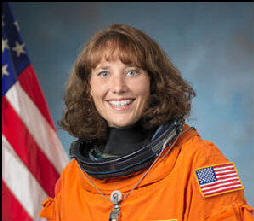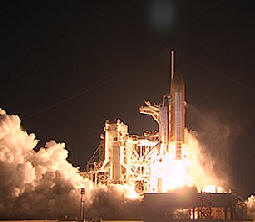 |
|
|
|
|
|
|||
|
By |
||||
 |
April 6, 2010 -
Eighth grade students and children of the military community in
The
Metcalf-Lindenburger
is one of three teachers selected to fly as shuttle mission specialists
in the 2004 Educator Astronaut Class. She operates the shuttle's robotic
arm. Without robotics, major accomplishments like building the station,
repairing satellites in space and exploring other worlds would not be
possible.
|
|||
| NASA astronaut Dorothy M. Metcalf-Lindenburger, mission specialist | ||||
 |
||||
|
The
Discovery, with a
crew of seven, launched from NASA's Astronauts will install MARES, a Muscle Atrophy Research and Exercise System, so they can assess the strength of their muscles in space. They will also install a window observational research facility, which will allow crew members to better study global climates, land and sea formations and weather damage with the use of cameras, multispectral and hyperspectral scanners, camcorders and sensors.
"The performance
of our three Space Shuttle Main Engines was excellent," said Jim
Paulsen, SSME program manager, Pratt & Whitney Rocketdyne. "We're
honored to help deliver crew and equipment to the ISS that will allow
astronauts to determine how microgravity affects their health, and to
take appropriate countermeasures to prevent muscle atrophy while in
space." Pratt & Whitney Rocketdyne, Inc., a part of Pratt & Whitney, is a preferred provider of high-value propulsion, power, energy and innovative system solutions used in a wide variety of government and commercial applications, including the main engines for the space shuttle, Atlas and Delta launch vehicles, missile defense systems and advanced hypersonic engines. |
| ?AvStop
Online Magazine
Contact
Us
Return To News
|
|
